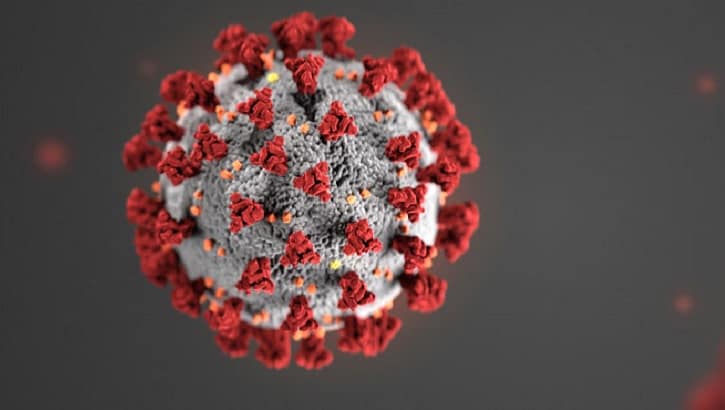
Networks in psychology: more than a pretty picture?
Take a piece of paper. Draw a few points, and then connect them. Congratulations: you have drawn yourself a network! More formally, networks are simplified representations of how the elements in a system are interconnected. So, in essence, everything that can be understood as being in relation with something else—and represented using dots connected with lines (i.e., nodes or vertices connected by edges, ties, or links)—can be seen as a network.1
Because networks are so broadly defined, it is no surprise that the field of network research covers all disciplines of science. Recently, it has also extended to psychological science, and especially the study of psychopathology. This provides a new way of thinking about mental disorders.
It had long been assumed that the symptoms of depression, such as sadness and suicidal thoughts, co-occur because they are caused by the same underlying disorder. However, the network perspective suggests a different possibility. Instead of being due to some unobserved common cause (A), the symptoms might co-occur because they are themselves influencing each other directly.2 If I am having sleeping problems (B), then I am also more likely to feelings of sadness (C). This is not because whatever disorder is causing my sleeping problems also makes me sad (A->B, A->C), but because sleeping poorly will itself affect how I feel (B->C).
Consequently, if we want to get a better understanding of psychological disorders, we should refocus on the relation between the symptoms and elucidate the patterns of interactions among symptoms.3 For example: using a network approach, my colleagues and I have created a network of depression symptoms.4,5
This figure illustrates how having the symptom loss of interest leads to another symptom loss of pleasure, which in turn leads to sadness, and – as the downward spiral spreads through the network, and the symptoms come to reinforce each other – the eventual result can be a full-blown depression.
This broader structural perspective is useful. But so too is the analytical toolbox that the network approach affords. For example, centrality analyses answer questions about how important a variable is in a network.6 A central symptom could be especially interesting for clinicians, as it may give an indication as to which symptom should be intervened upon in order to disrupt a dysfunctional symptom network. Indeed, because the network approach reveals the dynamics of symptom interactions—how the pieces fit together, and reinforce each other—it affords a whole new perspective of psychopathology.6
Of course, a big tree attracts the woodsman’s axe. As the popularity of networks has increased, so too has the criticism. Critics point out, for example, that psychopathological networks represent a fundamental overreach: this application, they argue, represents a generalization of methods developed for social networks, where network research partly has its origins. And it’s not clear that the move from one type of network to another is valid.
In social networks, the variables are people. These are really distinct entities, and the relations between them can often be directly observed. For example, co-authoring a paper together provides unambiguous empirical evidence of a connection between two authors. In contrast, psychopathology has to deal with fuzzy variables. So difficult questions arise, such as: How distinct are symptoms such as loss of pleasure and loss of interest really? And if we are unsure whether our symptoms are really different things, does it make sense to separate them and draw lines between them?
Furthermore, the lines that connect variables in a psychopathological network are not given, but have to be inferred from some kind of a dynamic model. And the estimation and interpretation of such models is itself still a topic of debate.7 Thus, critics argue that researchers are heaping problem upon problem when using psychopathological networks. The result is pretty pictures, but these illustrate relations that we don’t really know how to interpret.
So should we throw in the towel and quit doing network research in psychopathology? Well, no. It is important to make a distinction between statistical and conceptual issues. From a statistical point of view, there are still many hurdles to cross. But conceptually, the network idea seems very plausible; it opens up a whole new way of thinking about psychopathology, and enables us to ask new questions. Thus, at least in the latter sense, networks in psychopathology have already provided much more than pretty pictures.
References
- Bringmann, L.F. (2016). Dynamical networks in psychology: More than a pretty picture? (Doctoral dissertation). DOI: 10.13140/RG.2.2.28223.10404
- Borsboom, D., & Cramer, A. O. J. (2013). Annual Review of Clinical Psychology, 9, 91-121.
- Fried, E. I., & Nesse, R. M (2015). Depression sum-scores don’t add up: Why analyzing specific depression symptoms is essential. BMC Medicine, 13, 1-11.
- Bringmann, L. F., Lemmens, L. H. J. M., Huibers, M. J. H., Borsboom, D., & Tuerlinckx, F. (2015). Revealing the dynamic network structure of the Beck Depression Inventory-II. Psychological Medicine, 45, 747-757.
- Epskamp, S., Cramer, A.O.J., Waldorp, L.J., Schmittmann, V.D. and Borsboom, D. (2012). qgraph: Network Visualizations of Relationships in Psychometric Data. Journal of Statistical Software, 48, 1-18.
- Borgatti, S., Everett, M. & Johnson, J. (2013). Analyzing social networks. Los Angeles: Sage Publications.
- Bulteel, K., Tuerlinckx, F., Brose, A., & Ceulemans, E. (2016). Using raw VAR regression coefficients to build networks can be misleading. Multivariate Behavioral Research, 51, 330-344.




